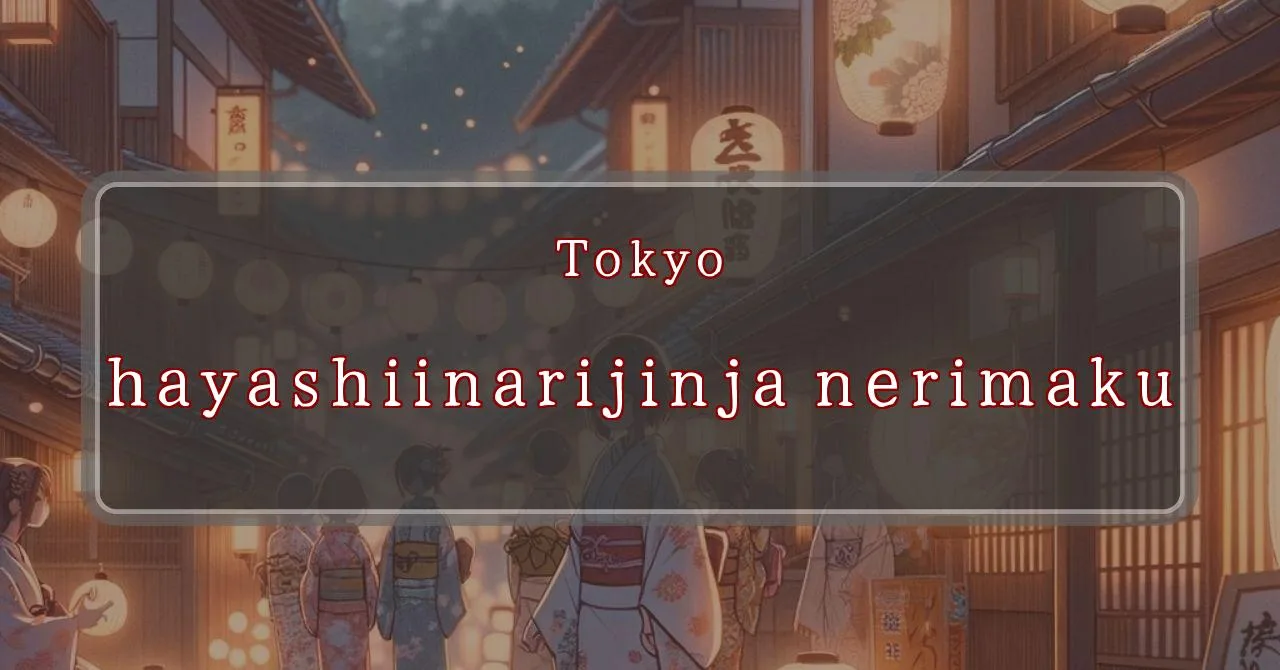Enchanting Shrine Festival in Nerima, Tokyo
Basic Information
Hayashi Inari Shrine is a Shinto shrine located in Toyotama Kita, Nerima Ward, Tokyo, Japan.
- Address: 1-7 Toyotama Kita, Nerima-ku, Tokyo
- Phone Number: None
- Access: 3-minute walk from Shin-Egota Station on the Toei Oedo Line
- Festival Days: October 24th, 2024
Main Events and Attractions of the Festival
The Hayashi Inari Shrine Festival is held annually on October 24th. The festival features a variety of events and attractions, including:
Mikoshi Togyo
The Mikoshi Togyo is the main event of the festival. A mikoshi (portable shrine) is carried through the streets of Nerima Ward by a team of people. The mikoshi is believed to be inhabited by the deity of the shrine, and carrying it is said to bring good luck and ward off evil spirits.
Shishimai
The Shishimai is a traditional Japanese lion dance. The dance is performed by two people, one wearing a lion head and the other wearing a lion body. The lion is said to bring good luck and ward off evil spirits.
Taiko Drumming
Taiko drumming is a traditional Japanese form of drumming. The drums are played by a group of people, and the music is said to be very powerful and energetic.
Benefits and Deities
The deities of Hayashi Inari Shrine are said to bring good fortune in business, bountiful harvests, and protection from evil spirits.
History and Origin
Hayashi Inari Shrine was founded in the Kanbun era (1661-1673). At that time, the area was under the direct control of the shogunate and was known as Ohayashi. However, during a drought, many people began cutting down trees in Ohayashi, which caused great distress. Then, the deity of the shrine appeared in a dream and told the people to dig a well at a certain location. When they did, they found a spring, and the water from the spring helped to end the drought. In gratitude, the people built Hayashi Inari Shrine.
Tips and注意事項 for Visitors
If you are planning to visit the Hayashi Inari Shrine Festival, please keep the following tips in mind:
- No shoes are allowed inside the shrine.
- Please be respectful of the shrine and its surroundings.
- There is no parking lot at the shrine. Please use public transportation or park your car in a nearby parking lot.
Blessings and Deities
The deities of Hayashi Inari Shrine are said to bring good fortune in business, bountiful harvests, and protection from evil spirits.
- Good fortune in business
- Bountiful harvests
- Protection from evil spirits
Origin and History
Hayashi Inari Shrine was founded in the Kanbun era (1661-1673). At that time, the area was under the direct control of the shogunate and was known as Ohayashi. However, during a drought, many people began cutting down trees in Ohayashi, which caused great distress. Then, the deity of the shrine appeared in a dream and told the people to dig a well at a certain location. When they did, they found a spring, and the water from the spring helped to end the drought. In gratitude, the people built Hayashi Inari Shrine.
Tips and Notes for Visitors
If you are planning to visit the Hayashi Inari Shrine Festival, please keep the following tips in mind:
- No shoes are allowed inside the shrine.
- Please be respectful of the shrine and its surroundings.
- There is no parking lot at the shrine. Please use public transportation or park your car in a nearby parking lot.
Parking Information
There is no parking lot at Hayashi Inari Shrine. Please use public transportation or park your car in a nearby parking lot.
Popular Stalls and Food Carts in Recent Years
| Type of Stall | Description |
|---|---|
| Takoyaki | A staple at Japanese festivals. Characterized by a crispy outside and a creamy inside. |
| Jaga Butter | A simple yet popular snack of hot potatoes lavishly topped with melted butter. |
| Baby Castella | Small castella cakes, sweet and fluffy treats enjoyed by children and adults alike. |
| Grilled Ayu with Salt | Fresh ayu fish grilled whole with salt, a savory taste of Japanese summer. |
| Shaapin | A unique gourmet item influenced by foreign cuisine, with a chewy skin wrapping the filling. |
| Okonomiyaki | A Japanese grilled dish where you often choose your own ingredients for a personalized flavor. |
| Cotton Candy | A fluffy, sweet snack that’s extremely popular with children. |
| Chocolate Banana | A banana coated in chocolate, a fun and visually appealing dessert. |
| Kushiyaki | Various types of ingredients skewered and grilled, an easy-to-enjoy snack. |
| Yakisoba | Fried noodles mixed with a special sauce, a fast food favorite in Japan. |



